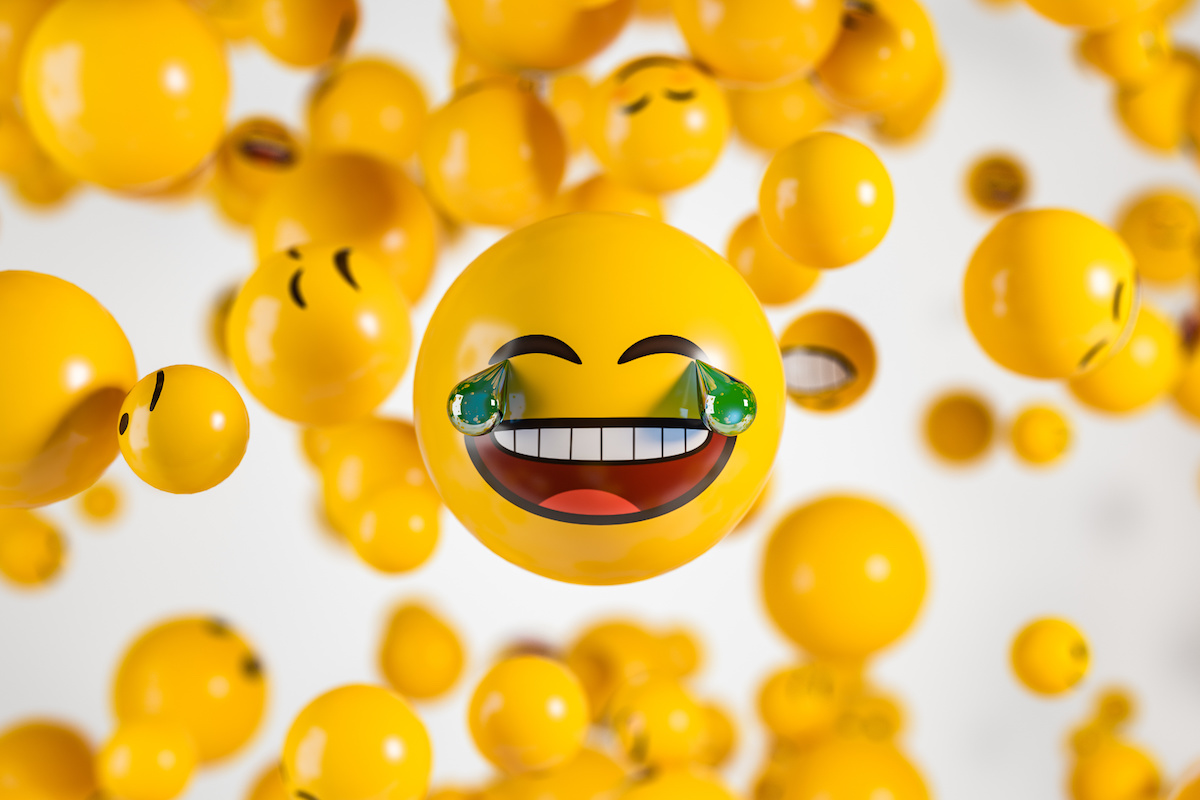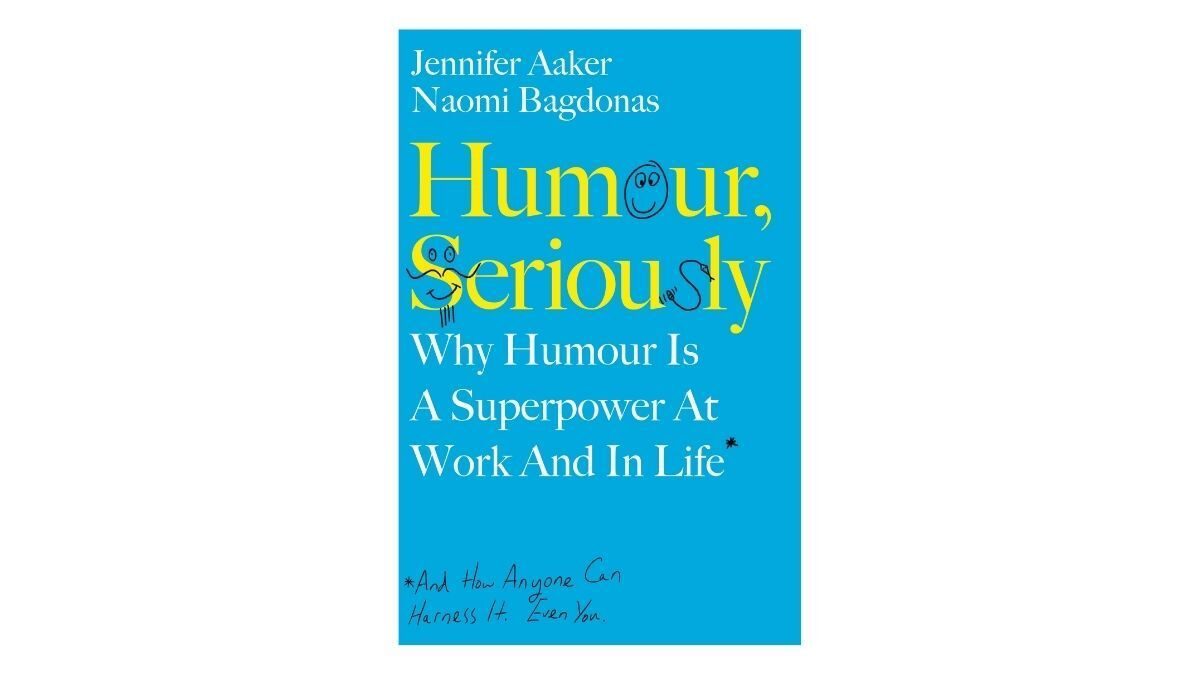Why Humour Is a Superpower We Should All Learn To Harness

We could all do with a laugh right now. So new book Humour, Seriously: Why Humour Is A Superpower At Work And In Life, published this month, comes as welcome light relief. And it is seriously funny – even though, as it points out, unpicking the anatomy of humour is often likened to dissecting a frog: “Few people care and the frog dies”.
With a foreword by former Pixar president Ed Catmull and an afterword by The Big Short author Michael Lewis, Humour, Seriously is not, however, lightweight. It’s based – no joke – on a course at Stanford Graduate School of Business, where co-author and behavioural psychologist Dr. Jennifer Aaker is a professor. When her fellow co-author Naomi Bagdonas isn’t lecturing there, she runs a strategy consultancy and coaches executives and celebs to appear on TV shows, including US topical sketch show Saturday Night Live. Bagdonas herself performs comedy, plus teaches improv to inmates at San Francisco county jail to improve their resilience.

Even before the haha-pocalypse that is the current news cycle, laughs were for many of us already in almost as short supply as kettlebells. The average 4-year-old laughs 300 times a day – the same amount as the average 40-year-old laughs every two and a half months. According to a Gallup poll of 1.4m people in 166 countries, our LOL count drops off a “humour cliff” around the age of 23. Why the long faces? According to the co-authors, “We grow up, enter the workforce and become ‘serious and important people’.”
Humour At Work
But even the most important and seemingly serious people find time for humour. Take US President George W Bush teasing the new chairman of his Council of Economic Advisors on wearing tan socks with a dark grey suit. Everybody else turned up to the next briefing sporting a pair, showing solidarity (and socks). Or US Secretary of State Madeleine Albright performing a take on “Maria” from West Side Story with her Russian counterpart Yevgeny Primakov at the formal gala dinner of an international summit. They dubbed their version “East West Story”.
Laughter releases the “trust hormone” oxytocin in a way that, as the co-authors quip, is “still permitted by HR”, quickly building relationships and bolstering them over time.
Even if the stakes are lower in your own line of work, incorporating humour might still seem like risky business. But if you’re afraid of the ramifications, the joke might be on your workplace’s culture. As Hiroki Asai, the erstwhile head of Apple’s Creative Design Studio (now Airbnb’s global head of marketing), says, “Fear is the greatest killer of creativity.”
Asai invited humour to all-hands meetings of his 2,000-plus team at Apple by playing a video of some of them dressed up as the Blue Man Group and scheduling a performance from a flash-mob gospel choir. Such stunts “chased fear from the system”, emboldening his team to think and speak more freely. While at Sun Microsystems, former Google chairman Eric Schmidt once found that pranksters had disassembled and reassembled a Volkswagen Beetle in his office overnight. He held meetings in the car.
Comedy And Creativity
After all, humour is creativity. The University of Southern California tasked professional funny people, amateur comedians, and average jokers to caption New Yorker cartoons; across the board, MRI scans showed greater activity in brain regions associated with creativity in the subjects told to come up with humorous captions.
The Massachusetts Institute of Technology pitted card-carrying comedians against product designers and students in a humorous caption competition followed by a brainstorming session; the comedians generated 20 percent more ideas, which were rated by other people as 25 percent more creative. (The resulting PhD dissertation was titled “Haha And Aha!”)
Humour fosters psychological safety: “the belief that we won’t be punished or ridiculed when we make a mistake”. That makes us more open-minded, motivated, and persistent. Just the anticipation of laughter decreases so-called “stress hormone” cortisol, lower levels of which are correlated with enhanced cognitive function.
And while, as the co-authors note, the best medicine is medicine, laughter “just might help you avoid needing quite so much of it”, increasing blood flow and muscle relaxation while reducing arterial stiffness. A 15-year longitudinal study of 50,000 people by the Norwegian University of Science and Technology correlated a robust sense of humour with increased longevity.
Most would-be workplace humorists fear a different – but still painful – kind of death. Mercifully, research by Harvard and Wharton, in which subjects assessed job candidates by reading replies of varying mirthfulness that they’d given to standard interview questions, indicates that wisecracking success (or failure) isn’t about getting a laugh (or not). Instead, it’s about being brave enough to joke in the first place – which signifies confidence – and being appropriate – which signifies competence and status.
Joking Appropriately
Appropriateness shifts with power, the co-authors explain. “Punch up” to someone of higher status and you’re brave; “punch down” to someone of lower status and you’re bullying. If you’re a leader, self-deprecation makes you seem confident enough to laugh at yourself but also humble and relatable – although there is the risk that other people will laugh just because you’re the boss, which makes your humour harder to calibrate. But if you’re lower status, the risk is that self-deprecation comes across as insecurity.
What’s appropriate is however “far from universal”, as the co-authors caution, and constantly shifting. Navigating this moving minefield is about correctly dialling the three key components of comedy. There’s truth, which is at the heart of humour. There’s pain, physical or emotional, which can range from slight awkwardness to full-blown tragedy. Then there’s distance, which is how far an individual or group is from the subject of your humour. That distance can be psychological, geographical or temporal (“too soon”).
Truth with too much pain or not enough distance can be insensitive, hurtful or offensive. And if your humour offends or fails, don’t dismiss it as the other person’s problem, say the co-authors: recognise that you might have crossed a line, diagnose why and make it right.
But humour judged right can be cathartic, an effective coping mechanism for even the worst of circumstances. US satirical outlet The Onion put out a special 9/11 issue just two weeks after, a period when late-night talk-show hosts didn’t dare try to raise a smile. A nation in mourning received the perfectly pitched publication – with headlines such as “Holy Fucking Shit: Attack On America”, “US Vows To Defeat Whoever It Is We’re At War With” and “Hugging Up 76,000 Per Cent” – overwhelmingly positively and gratefully.
As Humour, Seriously reminds us, “sometimes the more we hurt, the more we need to laugh”.
Humour, Seriously: Why Humour Is A Superpower At Work And In Life (Penguin) by Jennifer Aaker and Naomi Bagdonas is out now.



















